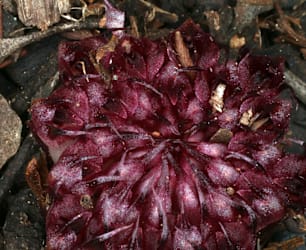Wandering in Illawarra rainforest is one of the great pleasures that this region offers.
I never seem to get tired of looking at the plants large and small, the fungi, the creatures, the leaf litter and the patches of sky above, or feeling the breeze or mist or drizzle in the air, smelling the scents of growth and decay, and hearing the many movements of the forest: leaves, rainfall, birdcall.
Appreciating the rainforest can be done in so many different ways: running through, walking along, pottering about, careful attention to particular details or just general open-mouthed gawping (which I reckon is an under-rated activity).
I do generally find that going slowly means you observe more. And for me that means more enjoyment, as well as more learning. I don't think I'd have seen the fruit of Scentless Rosewood (or Synoum glandulosum) on a recent walk if I'd been going any faster, because the fruit was very high up and in a position where I wouldn't have noticed it if I'd just looked around as I walked along.
Other Scentless Rosewoods around are further advanced in their fruiting, and that makes them more visible, particularly on a dull day when they seem to stand out among all the greens of the foliage.

The Scentless Rosewood is a fairly common and widespread large shrub or smallish tree in the Illawarra region. It can be found in rainforest (particularly rainforest edges) on the escarpment and in coastal areas, as well as in the understorey of eucalypt forest that has not recently been subjected to fire.
Puckey's Estate has quite a few, in the hind dunes a bit away from the strongest impacts of the ocean. There are even Scentless Rosewoods along the Mount Kembla Summit Track, where they grow to no more than around 3m, though in better conditions they'll generally reach 7m or 8m tall. The fruit are a good way to identify them, but their handsome compound leaves are also fairly distinctive.
You could grow a Scentless Rosewood tree to attract birdlife to your garden; it's popular with the Green Cat-bird, known for its distinctive cat-like yowling call, and other fruit-eating birds. It's smaller than many of the local rainforest trees (believe it or not, it's related to the giant Red Cedar), and can be managed as either a shrub or a tree, depending on your preferences.
Oh, and why the name? Well, the wood doesn't have much of a scent, unlike some well-known timber trees also called Rosewood (in the Dalbergia genus). On the other hand, the flowers have a pleasant, if very light, scent, so in this case we could say that Rosewood smells sweet despite the common name it goes by!

Emma Rooksby is the coordinator of the Growing Illawarra Natives website





